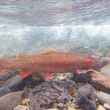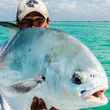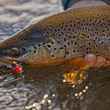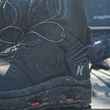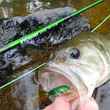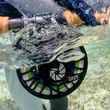Though the title is intentionally a bit tongue-in-cheek, the results of a recent study published in the scientific journal PLOS ONE suggest that not only are hatchery-reared steelhead less intelligent than their wild counterparts but that they exhibit defects in the structure and composition of their lateral lines. These two findings are a likely explanation for why hatchery-reared juvenile steelhead exhibit a significantly reduced survival rate to adulthood than wild born steelhead do.
If you're at all familiar with fish biology, you've likely heard of the lateral line. If you haven't, the lateral line is sensory organ system that is arguably more important to a fish than any other aspect of its biology. The reason for this is that the lateral line of a fish is its primary tool for sensing and reacting to its environment. Cell clusters, called neuromasts, located along a fish's lateral line allow the fish to sense changes in stream flow rate, direction and other hydrodynamic fluctuations. It plays a crucial role in a fish's ability to catch prey, avoid predators, interact socially (including spawning) and communicate with other fish and orient and hold station in currents.



